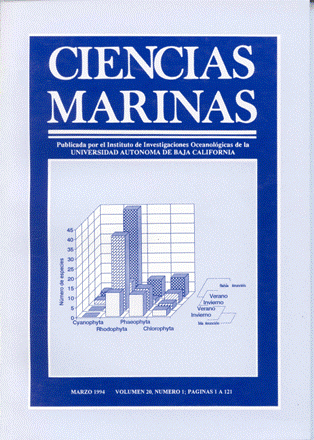Structure of the fish communities of Raya Lagoon, Margarita Island, Venezuela
Main Article Content
Abstract
The structure of the fish community of Raya Lagoon was analysed during 1990. Monthly catches were made in the mouth and inner part of the lagoon, using a 6 mm-mesh beach seine net, 31 m in length and 2.15 m in height. A total of 19,516 specimens, corresponding to 30 families, 50 genera and 62 species, were caught. The most numerous were Anchoa hepsetus, 36.60%, and Eucinostomus gula, 23.51%. Numerical diversity fluctuated between 1.74 and 3.51 bits/ind diversity in terms of weight, between 1.91 and 3.5 bits/ind, species richness, between 3.45 and 4.29; equitability, between 0.48 and 0.74; redundancy, between 0.28 and 0.67; dominance, between 42.25 and 80.61%. The dominant species were Eucinostomus gula, Diapterus rhombeus, Anchoa hepsetus, Archosargus rhomboidalis, Arius herzbergii and Xenomelaniris brasiliensis. Of the species found, 41.94% were occasional visitors, 30.65% were cyclical visitors and 27.42% were permanent residents. Likewise, 40.32% were first order consumer species; 40.32%, second order consumers; 19.36%, third order consumers. The low percentage of permanent residents indicates this area’s instability.
Downloads
Article Details
This is an open access article distributed under a Creative Commons Attribution 4.0 License, which allows you to share and adapt the work, as long as you give appropriate credit to the original author(s) and the source, provide a link to the Creative Commons license, and indicate if changes were made. Figures, tables and other elements in the article are included in the article’s CC BY 4.0 license, unless otherwise indicated. The journal title is protected by copyrights and not subject to this license. Full license deed can be viewed here.

